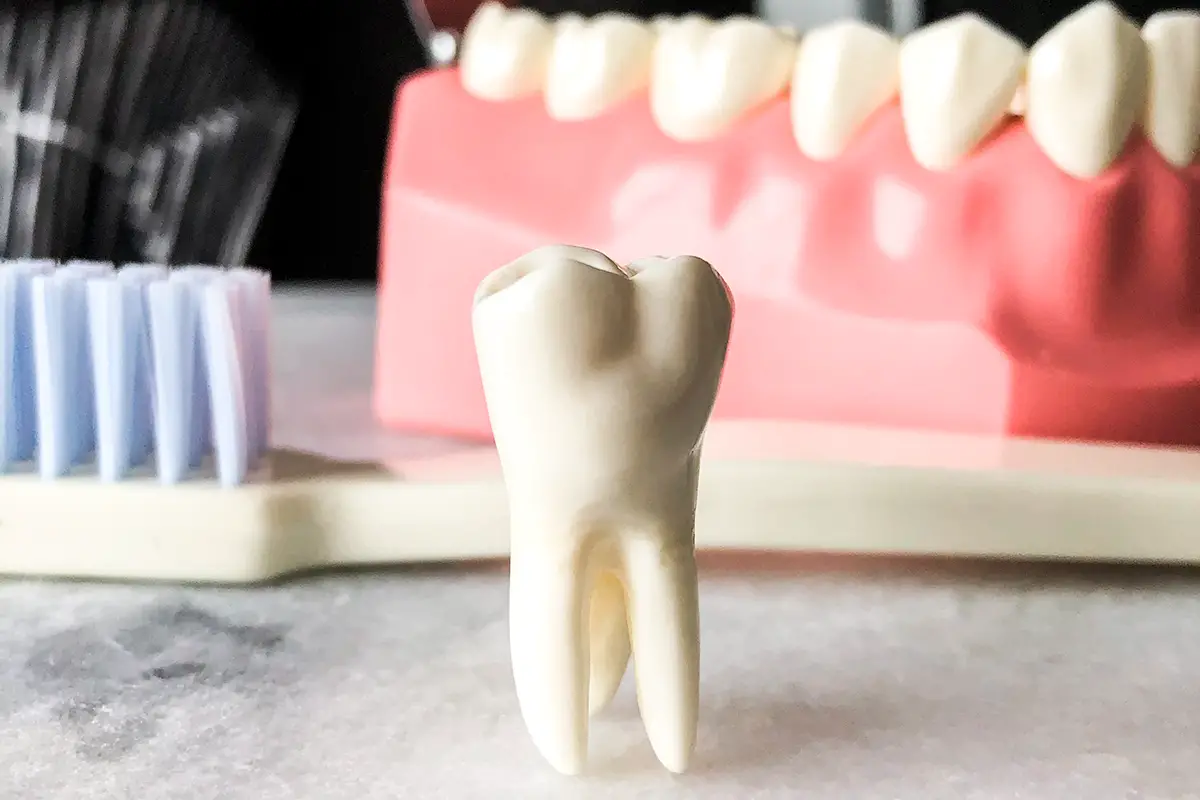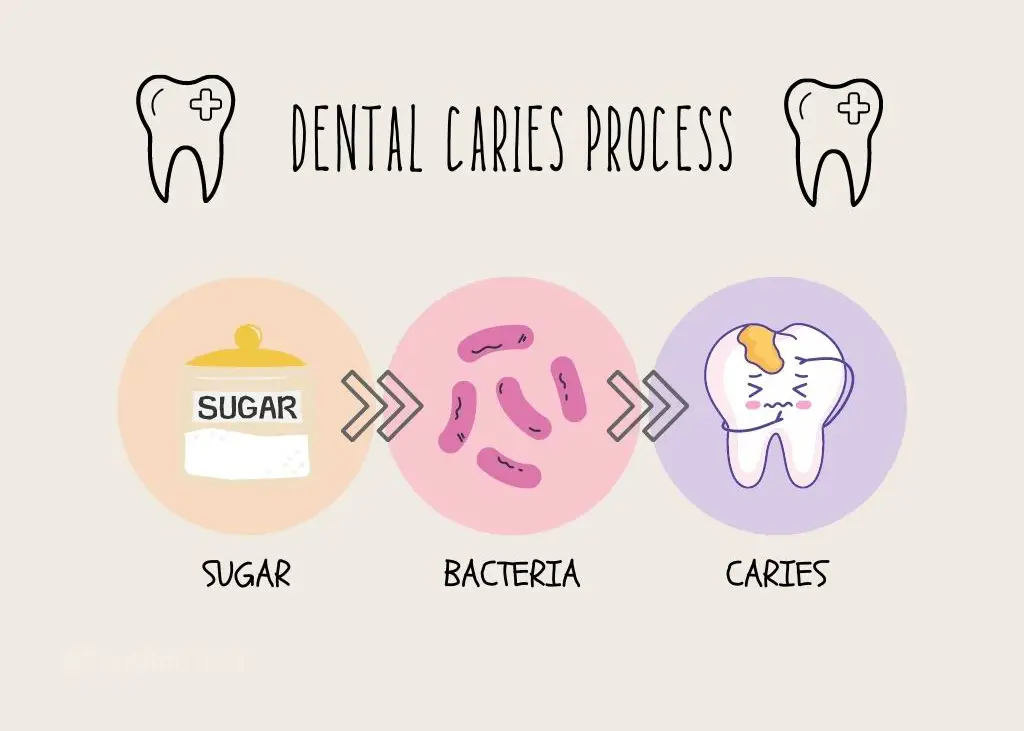When we have teeth problems, be it large cavities, broken teeth, or fractured roots, it can lead to tooth loss. Losing teeth can have a multitude of consequences and negatively affect our lives. But can adult teeth grow back, or can the tooth structure regenerate?
Adult teeth cannot grow back as they are permanent, and no teeth will replace them. Tooth enamel cannot regenerate, but dentin and cementum can continue to regenerate to a limited degree. Humans only have two sets of teeth, primary and permanent, but can have supernumerary teeth in both dentitions.
In this post, I explain how scientists are currently trying to grow teeth from stem cells, and I also touch on why teeth cannot grow back and some circumstances where it can seem like new teeth are erupting in the mouth.

Why adult teeth cannot grow back
The substances that teeth form from cannot regenerate themselves in our body to build new teeth or to heal cracked or broken teeth. Our DNA only has specifications for two sets of teeth; once tooth structure is lost, it is lost for good.
Often teeth can be mistaken for bones, and even though there are many similarities, teeth are not bones. Bone has an intricate and large blood supply, and the cells that can regenerate and break down bone (osteoblasts and osteoclasts) do so easily.
But teeth do not have these cells and are rather a calcified matrix that forms from epithelial stem cells when we are forming in utero. Adult teeth start forming as tooth buds around 4 months into pregnancy.
The tooth bud matures into a tooth germ. Picture it as a small sack of all the cells that are needed to form teeth over the next few months and years.
As we get older and time passes, the cells in the tooth germ start to form the different substances of the teeth.
Teeth are made out of three hard substances;
- Enamel
- Dentin
- Cementum
And in the center of the tooth are the blood and nerves the tooth, as you can see depicted in the image below.

Because the tooth formation (called odontogenesis) is so complex, it takes years to complete, and once the tooth is complete, the cells that were responsible for the enamel to grow are lost.
The production of enamel is final, and teeth cannot regrow or repair.
The other hard structures of dentin and cementum do have a limited capacity to regenerate but cannot repair cracks.
Read Now: Can Bone Loss in the Jaw Be Reversed? Hygienist Explains.
Teeth can be remineralized but cannot be regrown; stop cavities at the first stage
However, on a microscopic level, if enamel loses some minerals, they can be absorbed back into the tooth to strengthen and remineralize it, preventing cavities. Remineralizing can be done because it is only a partial loss, not the entire structure that has been lost.
I use this example when speaking to my patients;
Imagine your tooth as a brick wall.
Every time we expose our teeth to sugar and acid (through eating, drinking or poor oral hygiene due to the bacteria producing acid), the tooth loses individual bricks in its wall.
If the acid continues to expose the tooth for an extended period, too much of the brick wall will be lost, and a hole will form, forming a cavity.
But in the preliminary stages of losing the individual bricks, using fluoride or nano-hydroxyapatite, the tooth will absorb these minerals, and the “bricks” can be placed back in the wall, strengthening it.
Our teeth are constantly under attack by the bacteria in the mouth and sugar, and the risk of developing cavities is always there. So taking care of our teeth is so important. We only get one set of adult teeth! Flossing and brushing with a remineralizing toothpaste is very important for the health of the teeth and the gums.
Read Now: Hygienist Compares: Sonicare vs. Oral-B Electric Toothbrushes

Scientists are trying to grow teeth from stem cells
How wonderful would it be if we could grow teeth back? It sure would solve so many issues. Maybe one day, the science will advance enough that we can grow teeth back with ease.
Currently, scientists are trying to grow teeth using stem cells from the tooth germ. As I explained above, the tooth germ is the sac of cells that contain all the tissue that will form the teeth.
Science is evolving and showing promise! I can’t wait to see what the future holds!
Circumstances that can be confused for new adult teeth erupting
Bone spurs being rejected by the body
When oral surgery is performed, teeth are extracted, or the jaw bone is manipulated, fragments of bone can be left behind.
The human body is extremely good at rejecting foreign bodies, and the body will begin to reject the bone fragment. Over time it will start poking through the gums, making the person believe that they are growing a new tooth and it is erupting in their mouth.
Late eruption of wisdom teeth
sometimes wisdom teeth never erupt in the mouth and stay compacted within the jaw bone under the gums. If another tooth has been taken out near the wisdom tooth, over time, the wisdom tooth can become
I have had patients in their 50’s and 60’s come and sit in my dental chair and explain that they think they have a new tooth erupting. Upon assessing the mouth and looking at current x-rays, it confirmed that they had a wisdom tooth that never erupted into the mouth but had begun to.
They have been confused as to why the tooth took so many years to erupt into the mouth!
Bony protrusions are mistaken for new teeth; Torus/Tori and buccal exostosis
Mandibular and maxillary tori are bony protrusions that occur in the mouth. Mandibular tori occur in up to 10% of the population, and maxillary torus (also called torus platinum) occurs in up to 30% of the population.
Over time, these bony protrusions can continue to grow, which can be alarming to people who all of a sudden discover them. They pose no risk to patients, and I make see I show my patients who have them and explain what they are so they are aware.
Buccal exostosis is a similar bony growth, but occurs on the jaw bone’s outer surfaces (cheek side) near the teeth. Again, it poses no risk but can get in the way of flossing and brushing.
Supernumerary teeth
I’ve had patients sit in my chair for the first time, and I start the exam, taking note of an extra tooth! Most often, extra teeth do not appear as regular teeth. They do not have a set blueprint for size and shape.
Supernumerary teeth are rare, but they do occur. They have no set shape as the regular lineup of teeth have, and they can appear in many different shapes and sizes.
They occur when extra tooth buds form in utero, and the cells form into a tooth!
Sometimes supernumary teeth can erupt later in life, making the patient think they have another set of teeth coming in!
Read Now: How Dental Hygienists Clean Teeth! What You Need to Know!
What to do if a permanent tooth is loose?
If a permanent tooth is loose, it is best not to touch the loose tooth or chew food near that tooth. Make an appointment with your dental professional as soon as possible. Teeth can become loose due to injury, gum disease, or infection. Important to note that teeth naturally wiggle slightly.
Seeing professional treatment is important if you think you have any of the situations I have discussed in this post! Nothing is better than an in-person assessment.
I hope you have a great day and that you have found the information you were looking for!
Holly 🙂

